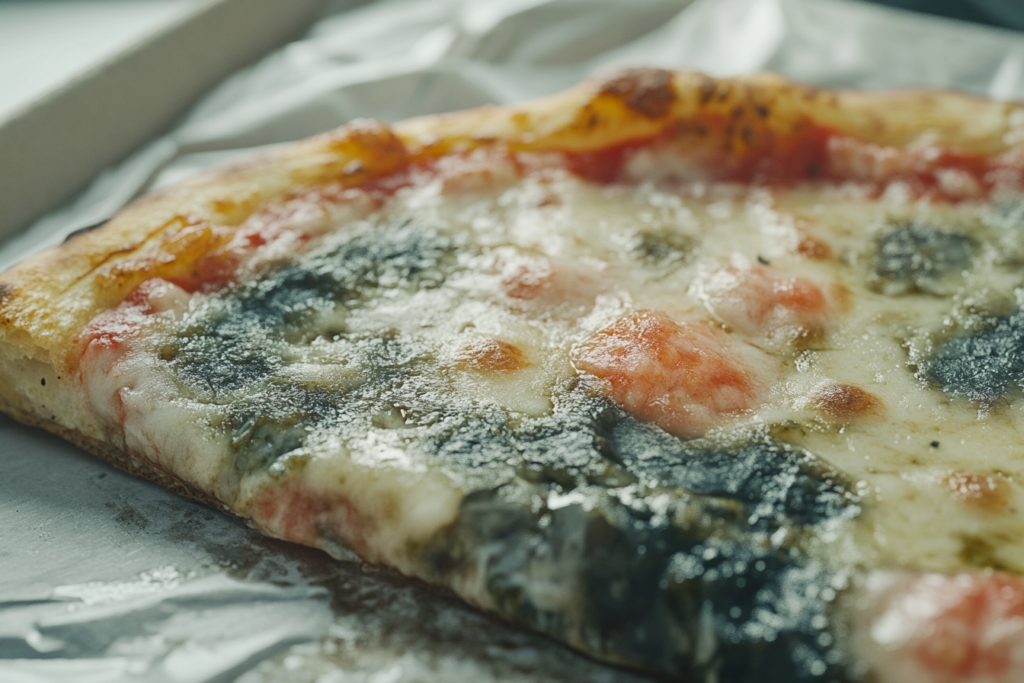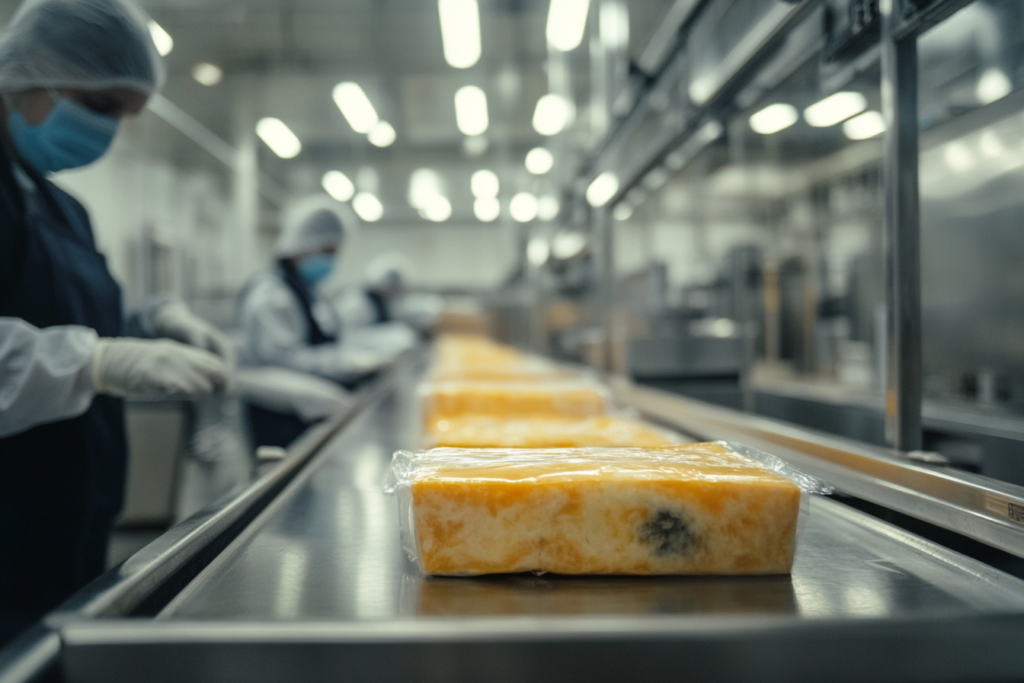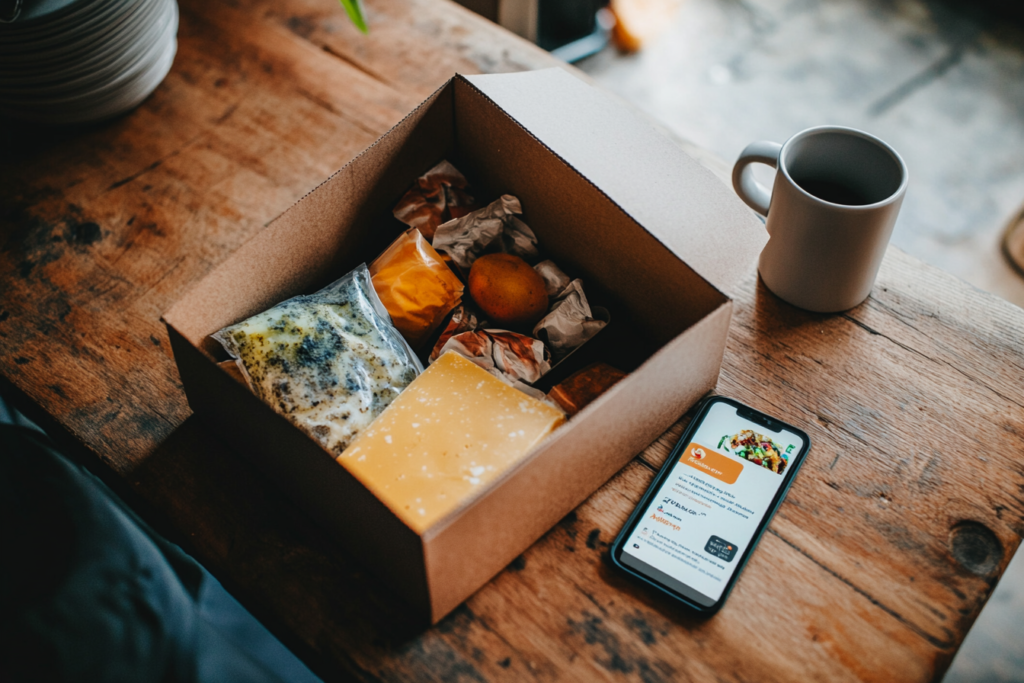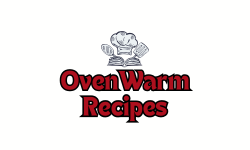1. Introduction
Lunchly, a popular meal delivery service, is now under scrutiny following viral reports of moldy cheese in its meal kits. Questions like “Does Lunchly have moldy cheese?” have flooded social media and sparked concerns among customers about the brand’s food safety standards. This article delves into the controversy, examines the root cause, and offers insights into its implications for the food delivery industry.
In this article, we’ll delve deep into the controversy, explore its root causes, and discuss the impact it has had on Lunchly and the food delivery industry as a whole.
2. Does Lunchly Have Moldy Cheese? An Investigation
2.1 The Concept Behind Lunchly: Is the Cheese Always Fresh?
Lunchly was created with a vision to make meal preparation effortless for busy individuals and families. It offers pre-packaged meal kits tailored to diverse dietary needs, ranging from vegetarian to keto-friendly options. Backed by high-profile celebrities like KSI and Logan Paul, Lunchly quickly gained traction in the food-tech market.
By targeting millennials and Gen Z consumers who prioritize convenience, Lunchly positioned itself as a trendy alternative to traditional meal prep. Its appealing branding and competitive pricing helped it capture a sizable portion of the market shortly after its launch.
2.2 Lunchly’s Market Presence Before the Moldy Cheese Scandal
Before the mold allegations emerged, Lunchly was a rising star in the meal delivery space. Customers praised its wide range of options, user-friendly app, and subscription flexibility. Its popularity soared as it tapped into the growing demand for convenient, nutritious meals delivered to doorsteps.
However, as the company expanded, cracks began to appear in its operations. Customer complaints about delayed deliveries and inconsistent meal quality hinted at deeper issues, which ultimately culminated in the moldy cheese scandal.
3. The Allegations: Does Lunchly’s Cheese Show Signs of Mold?
3.1 Does Lunchly Really Have Moldy Cheese? The Allegations Explained

The controversy with Lunchly took center stage when multiple customers began sharing alarming reports of moldy cheese in their meal kits. Specifically, users who ordered pizza and snack kits discovered visible signs of mold upon opening their packages. As discussed in the Lunchly Mold Cheese Controversy, social media platforms like TikTok played a crucial role in amplifying these complaints.
The question “Does Lunchly have moldy cheese?” rapidly became a trending topic, as social media discussions intensified.
3.2 How Moldy Cheese in Lunchly’s Meal Kits Impacted Consumers
The reports of moldy cheese sparked a significant backlash among consumers, raising concerns about food safety and health risks. Mold on cheese can result in mild to severe reactions, including allergic symptoms and gastrointestinal issues, depending on the type of mold and the individual consuming it.
Beyond physical health concerns, many customers were emotionally affected. Several individuals voiced feelings of anger and betrayal on social media, stating that they had relied on Lunchly for their family meals. For parents, the idea of potentially serving moldy food to children was especially distressing.
Additionally, consumer trust—a cornerstone for any meal delivery service—took a massive hit. For customers, the experience of opening a meal kit to find contaminated food felt like a breach of trust, especially given Lunchly’s initial promise of convenience and quality.
3.3 How Social Media Fueled the Moldy Cheese Controversy
Social media amplified the moldy cheese controversy significantly, turning it into a full-blown PR crisis for Lunchly. TikTok videos, Instagram stories, and Twitter threads gave dissatisfied customers a platform to voice their grievances and document their experiences.
Key highlights of social media’s role include:
- Viral Videos: TikTok creators shared up-close footage of the moldy cheese, sparking millions of views and engaging wide audiences.
- Discussion Forums: Reddit threads dedicated to exposing corporate missteps featured lengthy discussions about Lunchly’s failings, with users comparing their own experiences.
- Influencer Reactions: Influencers who previously promoted Lunchly were forced to address the issue, often distancing themselves from the brand.
These platforms enabled customers to band together, ensuring that the issue received widespread attention and forcing Lunchly to confront the growing controversy.
4. Why Does Lunchly Have Moldy Cheese? Exploring the Root Cause
4.1 Quality Control Issues

One of the main factors behind the Lunchly moldy cheese controversy appears to be lapses in quality control. As the company expanded its operations to cater to a growing customer base, maintaining consistent standards became a challenge. Reports suggest that insufficient monitoring during production and packaging allowed contaminated products to reach consumers.
Key potential issues include:
- Inadequate Packaging: Poor sealing techniques may have allowed air and moisture to enter, creating the perfect environment for mold to grow.
- Lack of Inspections: Limited oversight in production facilities could have resulted in contaminated batches going unnoticed.
- Fast Scaling Without Infrastructure: As demand for Lunchly’s meal kits grew, the brand may have prioritized speed over stringent food safety protocols.
These lapses not only explain how moldy cheese could end up in customers’ homes but also highlight broader challenges in scaling operations while maintaining quality.
4.2 Supply Chain Challenges
The mold issue may also stem from supply chain inefficiencies. In the meal delivery industry, ingredients often travel through multiple stages before reaching the end customer. At each step, there’s potential for errors that compromise food safety.
Common supply chain issues that could explain the mold allegations include:
- Storage Problems: Improper refrigeration during transit could have allowed mold to develop before the meal kits were even packaged.
- Supplier Mismanagement: Lunchly may have sourced ingredients from suppliers with subpar quality standards, resulting in contaminated cheese being delivered to production facilities.
- Long Delivery Times: Prolonged transit times, combined with temperature fluctuations, can increase the likelihood of spoilage.
While Lunchly hasn’t officially confirmed these issues, similar supply chain failures have been cited in past controversies involving food delivery brands.
4.3 Mismanagement in Crisis Handling
Lunchly’s handling of the moldy cheese allegations has drawn sharp criticism. Many consumers feel that the company’s delayed and vague responses exacerbated the issue, rather than addressing it effectively.
- Delayed Acknowledgment: Lunchly’s initial silence on the matter left customers feeling ignored, giving the impression that the company was attempting to downplay the controversy.
- Vague Statements: When Lunchly finally issued a statement, it lacked specifics about the cause of the issue or the steps being taken to prevent future incidents.
- Poor Customer Support: Customers seeking refunds or replacements reported long response times and a lack of transparency, further eroding trust in the brand.
Effective crisis management could have helped contain the fallout, but Lunchly’s response instead fueled consumer frustration.
5. Is Moldy Cheese Common in Meal Delivery Kits Like Lunchly?
5.1 How Competitors Manage Quality Assurance
The Lunchly moldy cheese controversy has put a spotlight on the importance of rigorous quality assurance in the meal delivery industry. Leading competitors such as HelloFresh and Blue Apron have managed to maintain customer trust through strict food safety protocols and transparent processes.
Key practices employed by these brands include:
- Frequent Inspections: Conducting regular checks at every stage, from ingredient sourcing to final packaging.
- Temperature-Controlled Logistics: Ensuring proper refrigeration during transit to maintain freshness.
- Feedback Loops: Actively monitoring customer reviews and quickly addressing issues to prevent widespread dissatisfaction.
These measures not only reduce the likelihood of incidents like mold contamination but also build consumer confidence in the brand. Lunchly’s failure to implement comparable safeguards highlights the critical importance of quality control in this industry.
5.2 Regulatory and Legal Considerations
Food safety is tightly regulated, and the Lunchly moldy cheese allegations may attract scrutiny from bodies such as the FDA. Regulatory investigations into similar cases have even led to operational pauses, sparking speculation about whether Lunchly has been discontinued. These developments highlight the importance of adhering to strict food safety protocols.
Potential legal implications for Lunchly include:
- FDA Warnings: If Lunchly’s practices are found to violate food safety standards, the company could receive official warnings or face mandatory inspections.
- Lawsuits: Affected customers may file class-action lawsuits, especially if the moldy products caused health issues.
- Product Recalls: To rebuild trust, Lunchly may need to issue recalls for affected batches, which could result in significant financial losses.
The food delivery industry as a whole must remain vigilant, as even one high-profile failure can lead to stricter regulations and increased oversight.
6. Public Reaction to Moldy Cheese in Lunchly
6.1 Customer Complaints and Testimonials

The Lunchly moldy cheese controversy triggered a wave of complaints from outraged customers. Many shared their experiences on social media, describing how they discovered mold on the cheese included in their meal kits. Others expressed frustration over the lack of timely responses from Lunchly’s customer support team.
Key complaints included:
- Health Concerns: Customers were worried about the potential health risks of accidentally consuming moldy food.
- Refund Issues: Several users reported difficulties in obtaining refunds or replacements, further amplifying their dissatisfaction.
- Broken Trust: For many, the incident felt like a betrayal, especially since Lunchly had built its brand on promises of convenience and quality.
One Reddit user wrote, “I trusted Lunchly for my family’s meals. Opening a package to find moldy cheese was not only gross but unacceptable.”
6.2 Supporters’ Defense of Lunchly
Despite the backlash, Lunchly still has its defenders. Loyal customers argue that the mold incidents might have been isolated and do not reflect the overall quality of the brand. Some have even suggested that the virality of the controversy could have exaggerated the scale of the problem.
One TikTok user commented, “I’ve used Lunchly for months and never had an issue. Maybe this is just bad luck for a few people.”
This divide between detractors and supporters highlights the complexities of public perception during a brand crisis.
6.3 Influencers and Public Figures
The involvement of influencers like KSI and Logan Paul further complicated the moldy cheese controversy. As prominent faces of the brand, they were directly targeted by consumers demanding accountability. Their responses, or lack thereof, significantly influenced public opinion.
- KSI’s Response: While initially silent, KSI later tweeted a brief apology, stating that he was investigating the matter and working to ensure it wouldn’t happen again.
- Logan Paul’s Reaction: Logan Paul’s response was more subdued, with a general acknowledgment of the issue but no detailed follow-up.
The association with high-profile figures turned what could have been a contained issue into a viral scandal, illustrating the risks of celebrity endorsements in food-related ventures.
7. Lessons for the Food Industry
7.1 Importance of Rigorous Quality Control
The Lunchly moldy cheese controversy emphasizes the need for stringent quality control in the food delivery industry. Similar challenges have been faced by other brands, such as those discussed in Why Carnation Breakfast Essentials Being Discontinued?. These incidents demonstrate the reputational and financial risks of neglecting quality assurance.
Key lessons include:
- Proactive Testing: Regular microbial testing of food products can help detect potential contamination before the items are shipped to customers.
- Real-Time Monitoring: Using technology to monitor storage conditions, such as temperature and humidity, can reduce the likelihood of spoilage during transit.
- Employee Training: Ensuring that all staff are properly trained in food safety protocols can help minimize human error in production and packaging.
By implementing these practices, brands can avoid situations like the one faced by Lunchly and protect their reputation in a competitive market.
7.2 Responding Effectively to Consumer Concerns
One of the biggest missteps in Lunchly’s handling of the controversy was its slow and insufficient response to customer complaints. In a crisis, timely and transparent communication is key to managing public perception and rebuilding trust.
Strategies for effective crisis management include:
- Acknowledging the Problem: Companies should quickly issue a statement that acknowledges the issue and outlines the immediate actions they will take.
- Providing Solutions: Offering refunds, replacements, or discounts can help mitigate customer dissatisfaction.
- Staying Transparent: Keeping customers updated throughout the resolution process builds credibility and demonstrates accountability.
Lunchly’s failure to address these areas adequately highlights the need for robust customer support systems and well-prepared crisis response plans.
7.3 Celebrity Partnerships: Risks and Rewards
The involvement of high-profile influencers like KSI and Logan Paul initially gave Lunchly a significant advantage in marketing and customer acquisition. However, the moldy cheese controversy also revealed the risks of celebrity partnerships in the food industry.
Key insights include:
- Shared Accountability: Influencers who endorse a product must prepare to face criticism alongside the brand during crises.
- Brand Alignment: Celebrities should ensure that the brands they promote align with their values and maintain consistent quality.
- Reputation Management: Both brands and influencers need to have contingency plans in place to address potential backlash effectively.
While celebrity endorsements can drive massive visibility, they also heighten scrutiny when issues arise, as seen with Lunchly’s current challenges.
8. FAQs About Lunchly and Moldy Cheese
8.1 Is Lunchly’s Cheese Really Moldy?
Yes, several customers have reported finding mold on cheese included in Lunchly meal kits, particularly in pizza and snack variants. Viral social media posts and videos showing visible mold on the products have substantiated these reports. While Lunchly has not publicly disclosed the extent of the issue, the evidence shared by consumers suggests a recurring problem.
8.2 What Are the Risks of Consuming Moldy Cheese?
Consuming moldy cheese can lead to a range of health issues, including:
- Allergic reactions such as sneezing, itching, or breathing difficulties.
- Digestive problems, including nausea, vomiting, and diarrhea.
- In rare cases, exposure to certain molds may result in more severe illnesses, especially for individuals with weakened immune systems.
It’s crucial to inspect food products before consumption and discard any items that show signs of mold.
8.3 How Has Lunchly Responded?
Lunchly has issued a brief statement apologizing for the issue and promising to investigate the root cause. However, many customers have criticized the company for its lack of transparency and slow response times. Lunchly has offered refunds and replacements in some cases, but many remain dissatisfied with the company’s overall handling of the controversy.
8.4 Are All Lunchly Products Affected?
The moldy cheese issue seems limited to specific meal kits, such as those containing pizza ingredients, rather than all Lunchly products. Customers who experienced issues should contact Lunchly’s support team to clarify whether their product batch is affected.
8.5 What Should I Do If I Receive a Moldy Product?
If you receive a moldy product from Lunchly, follow these steps:
- Document the Issue: Take clear photos of the moldy item and its packaging for evidence.
- Contact Customer Support: Reach out to Lunchly’s support team via their app or website to report the issue and request a refund or replacement.
- Discard the Product Safely: Do not attempt to consume the affected item, as it may pose health risks.
- Leave Feedback: Consider leaving a review to inform other customers and hold the company accountable.
These steps help resolve your concern while raising awareness about the issue.
9. Conclusion
The Lunchly moldy cheese controversy has highlighted critical issues within the meal delivery industry, ranging from quality control lapses to inadequate crisis management. What began as isolated customer complaints quickly escalated into a public relations nightmare, thanks to the power of social media and the involvement of high-profile influencers.
For Lunchly, this incident serves as a wake-up call to prioritize food safety and transparent communication. Failing to meet these expectations not only risks alienating loyal customers but also damages brand credibility in an increasingly competitive market.
For consumers, this controversy underscores the importance of scrutinizing the quality of meal delivery services. Ensuring that products meet high safety standards is crucial, especially when purchasing perishable items.
As the food-tech industry continues to grow, the lessons learned from Lunchly’s challenges offer valuable insights for both businesses and customers. Whether Lunchly can recover from this setback remains uncertain, but the controversy has already left a lasting mark on the brand and the industry at large.
